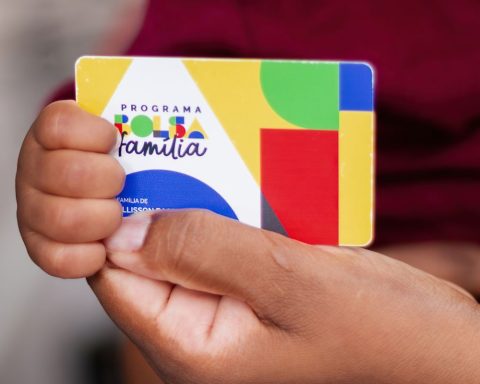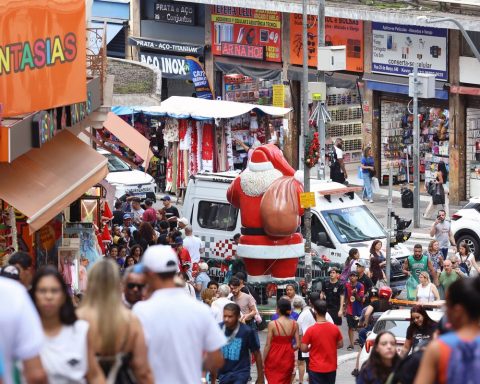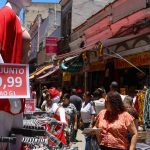The poverty rate in Brazil’s metropolitan regions rose from 16% in 2014 to 23.7% in 2021. In absolute terms, this means that there was an increase from 12.5 million poor people to 19.8 million. In relation to extreme poverty, the rate increased from 2.7% to 6.3% in the researched period, which represented an increase from 2.1 million to 5.2 million people in extreme poverty – those living with R $160 monthly or less – in large Brazilian cities.
The data are included in the 9th edition of the “Inequality in the Metropolis Bulletin”, prepared jointly by the Pontifical Catholic University of Rio Grande do Sul (PUCRS), the Metropolis Observatory and the Network of Social Debt Observatories in Latin America (RedODSAL), published today (8).
The basis for the survey is the National Survey by Continuous Household Sample (PNAD Contínua), an annual version of the Brazilian Institute of Geography and Statistics (IBGE).
This version makes it possible to see all forms of household income, from which the per capita household income (per family member) was calculated, economist Marcelo Ribeiro, professor at the Institute for Research and Urban and Regional Planning at Federal University of Rio de Janeiro (IPPUR-UFRJ and one of the coordinators of the study and member of the Observatório das Metrópoles.
purchasing power
The 22 main metropolitan areas in the country were analyzed, according to IBGE definitions. All data are deflated for the year 2021, according to the Broad Consumer Price Index (IPCA). The study worked with the poverty line defined by the World Bank (Bird) for upper middle-income countries, such as Brazil.
“The World Bank is based on purchasing power parity (PPP) to establish a comparable measure between the different countries and establishes a value that corresponds to this PPP”, said Ribeiro.
The researchers turned this into the Brazilian national currency, the real. Based on purchasing power parity (PPP), the poverty line was US$5.50 per day, while the PPP for extreme poverty was US$1.90. In 2021 values, in reais, the poverty line reaches about R$465 per month per capita; the extreme poverty line is approximately R$ 160 per capita per month.
Pandemic
Metropolitan regions concentrate almost 40% of the Brazilian population – more than 80 million people. Such regions are strategic from an economic, political and social point of view, but they also concentrate challenges and problems that afflict Brazilian society, the authors of the bulletin highlighted. In relation to inequalities and poverty, in particular, the scenario seen in recent years is one of serious social crisis, deepened by the effects of the covid-19 pandemic.
According to the bulletin, in the metropolitan region of São Paulo – the largest and most important from an economic point of view in the country – the number of extremely poor people grew from 381 thousand to 1.027 million people between 2014 and 2021. the number is much higher, having evolved from 1.986 million in 2014 to 3.922 million in 2021. In the same period, in the metropolitan regions of Salvador and Rio de Janeiro, for example, the number of extremely poor people jumped from 103 thousand to 483 thousand, and from 336 thousand to 926 thousand, respectively.
According to Andre Salata, a professor at PUCRS and one of the coordinators of the study, the effects of the covid-19 pandemic have worsened a situation that had been worsening for some years. “The pandemic acts, then, on a level of vulnerability that was already very high even by our standards.”
Salata explained that this occurred with the income of the poorest. In 2014, the poorest 40% of Brazilian metropolitan regions had an average income of R$515. Five years later, in 2019, this figure dropped to R$470. In the context of the pandemic, in 2021, the average income had reached R$396.
Analysis of each metropolitan region separately shows a similar pattern. Between 2014 and 2021, the income of the poorest falls from R$535 to R$404 in Rio de Janeiro; from R$354 to R$246, in Recife; and from R$714 to R$581, in Curitiba.
unemployment and inflation
Marcelo Ribeiro added that the country had already been on a trajectory of increasing poverty since 2015. When 2020 arrived, in the midst of the covid-19 pandemic, the expansionist income policy caused the poverty rate to decrease, “by the amount of the income transfer that started to be made of the emergency aid”. But from 2021 onwards, the level of poverty has increased.
As an effect of the pandemic, not only did inequalities increase, but the average income fell and reached the lowest values in the historical series. The average income in the metropolitan regions as a whole, in 2019, was BRL 1,935; in 2020, it dropped to R$1,830; and, in 2021, it reached R$ 1,698. In the Federal District, the average income dropped from R$2,784 to R$2,476 in the period. In the metropolitan region of Recife, the drop was from R$1,593 to R$1,079 and, in Porto Alegre, from R$2,218 to R$1,947.
The study also shows that the effects of the covid-19 pandemic on poverty and inequality indicators were felt from 2021, when they increased abruptly. Between the end of 2020 and the beginning of 2021, the poverty rate quickly evolved from 19% to 24.7%, while extreme poverty rose from 4.1% to 6.7%.
Trend
Despite observing, in recent months, a reduction in the unemployment rate in the country, although it still remains at high levels, the IPPUR-UFRJ professor stated that if this drop in unemployment continues, it would have a positive effect to contribute to the reversal of this process. He noted, however, that the inflation rate remains at high levels, which reduces the population’s purchasing power. “Just the fact that she has access to income, with increased employment, is not enough if inflation remains high. People will have access to income, but with very low purchasing power, which makes them continue in this situation.”











![[Video] Uribista grandmother says she will march against the Petro Tax Reform [Video] Uribista grandmother says she will march against the Petro Tax Reform](https://latin-american.news/wp-content/uploads/2022/08/Video-Uribista-grandmother-says-she-will-march-against-the-Petro-1024x630.jpg)


